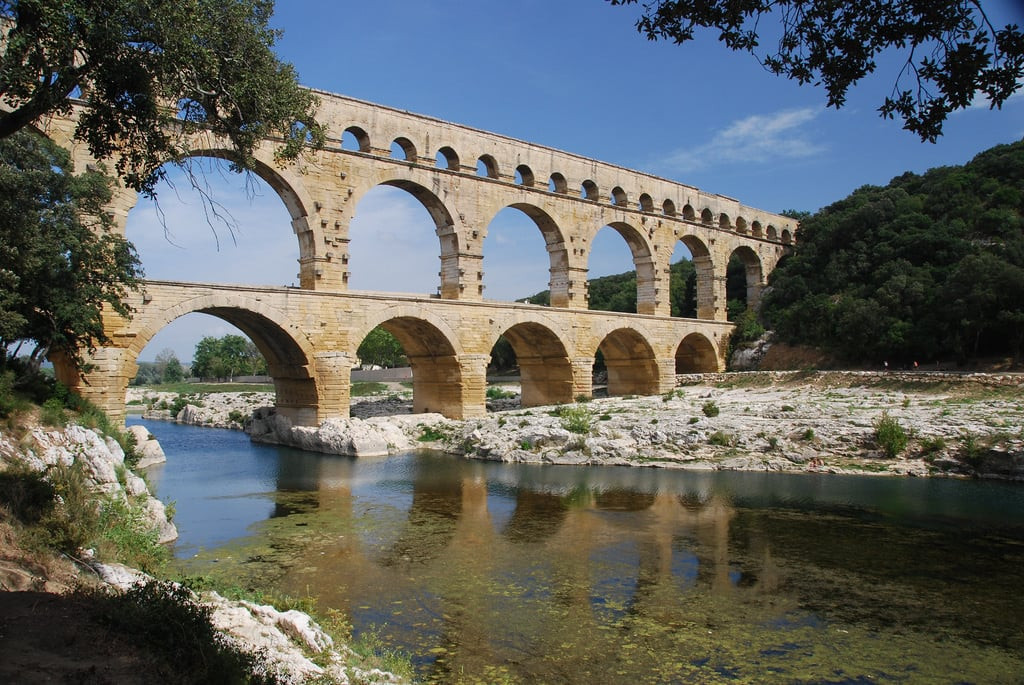While many buildings built in the 1900s have eroded over time, despite being built thousands of years ago, some concrete structures around the world surprisingly continue to stand up to the times. One of the most notable, the Pantheon of Rome, was built between 126 and 128 AD, yet its massive, unreinforced concrete dome still stands majestically. In fact, some ancient Roman aqueducts are still in use, constantly carrying water to land.
Therefore, the property of 2,000-year-old concrete that enables it to last for such a long time becomes an important question. This question brings with it the question of how we can construct buildings that are as durable and “super-strong” as the iconic structures of the Roman Empire. Engineers from the Massachusetts Institute of Technology provide a fascinating answer to these questions.
To summarize, the researchers believe that tiny minerals called “lime chips” give old concrete a kind of healing ability. This may not sound like much, but perhaps more interestingly, scientists have assumed for years that the presence of limescale in the old concrete mix was accidental and the product of improper mixing and carelessness.
“The idea of simply attributing the presence of these limescale chips to poor quality control has always bothered me,” Admir Masic, professor of civil and environmental engineering at MIT and lead author of the study, said in a statement.
Masic said, “If the Romans put so much effort into making an outstanding building material by following all the detailed recipes that were optimized over the centuries, why should they spend so little effort to ensure the production of a well-mixed final product? There should be more to this story,” he continues.
Historically, experts assumed that the secret ingredient in building structures like the Pantheon was related to a substance called pozzolanic material, according to Masic and other researchers. The strange part was that the pozzolanic material was obtained from volcanic ash from the Pozzuoli site in the Bay of Naples.
Architects of the time attached great importance to this material, and they transported it to the Roman empire to assemble important properties for construction workers.
However, after examining the old concrete samples in more detail, Masic observed the presence of what’s called lime crumbs in them. It may also be worth remembering at this point that the creation of lime crumbs is not exactly easy. They are not a random byproduct of other chemical processes. The team says you need to actively strive to build up lime crumbs.
More specifically, you have to mix concrete with lime at very high temperatures to get some lime crumbs. And of course, with a little more analysis, the team found evidence of this extremely hot mix in old concrete samples. The Romans really wanted the lime chips to be in these structures. In other words, they did not enter the concrete as a result of a careless mixing process.
 Roman aqueducts
Roman aqueductsAccording to Masic, hot mixing has two main advantages. First of all, it is not possible to obtain some compounds obtained during hot mixing with slaked lime. The second advantage is that this high temperature reduces the hardening time of the concrete and the settling time of the structure. In addition, the phenomenon that Masic describes as “self-healing features” emerges here.
Basically, during the hot mixing process, lime crumbs create a special pattern in the concrete and form what is known as a source of reactive calcium. This means that if small cracks do form, these cracks are more likely to propagate through the small limescale pattern. Then, if water gets inside the cracks, a series of reactions take place with the calcium source and the cracks are filled with a recrystallized version of the calcium source itself.
To validate their hypothesis, the researchers tested this as well. When they ran these tests, they found that the cracks they had formed closed within two weeks (and modern concrete did not).
The mysteriously puzzling material of Roman architecture probably goes much deeper than just the inclusion of lime crumbs. For example, a separate MIT study, also led by Masic in October 2021, found a large amount of volcanic ash in the walls of a 2,050-year-old Roman tomb, noting that this ash showed “unusual chemical interactions with rain and groundwater accumulated over more than two thousand years.”
“Understanding the formation and processes of ancient materials can inform researchers about new ways to create durable, sustainable building materials for the future. Caecilia Metella’s tomb is one of the oldest structures still standing, and insights that could inspire modern construction,” Masic said in a press release about the 2021 study. offers.”